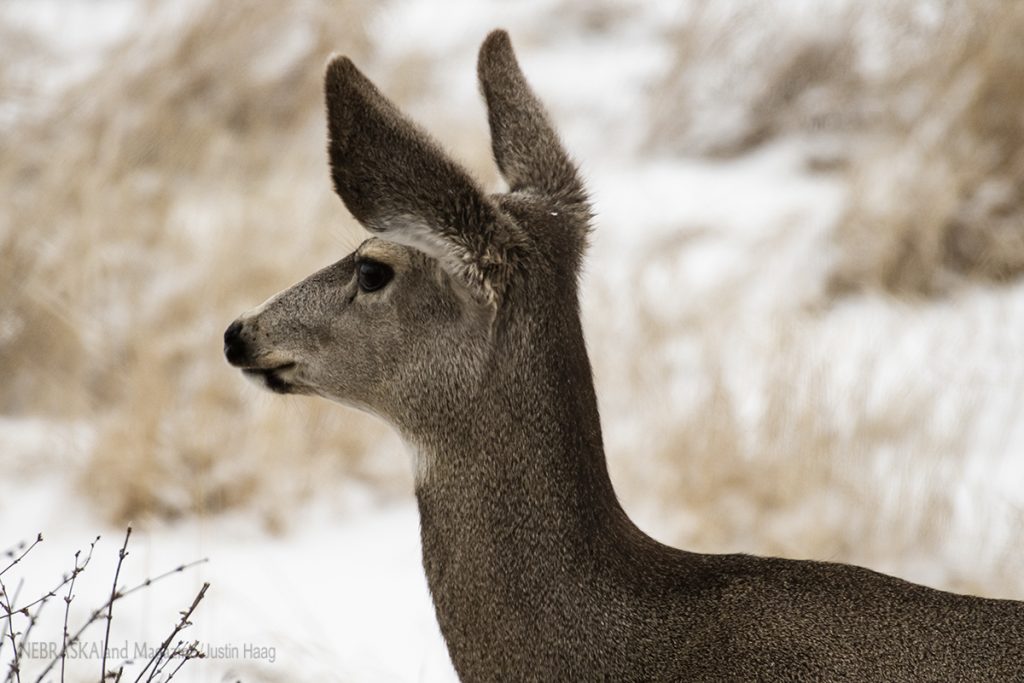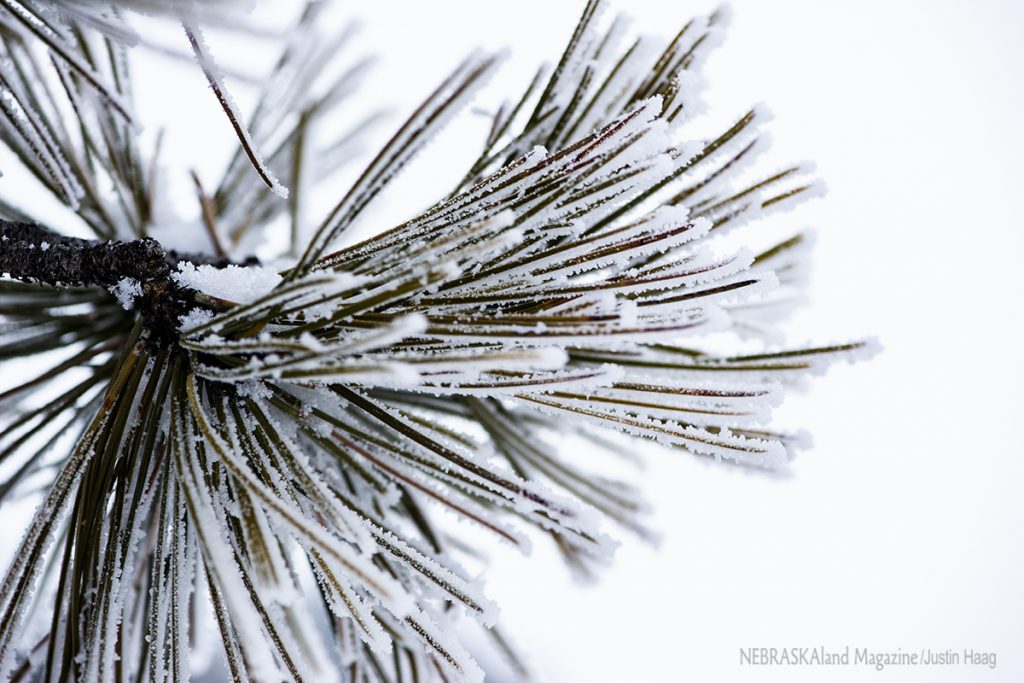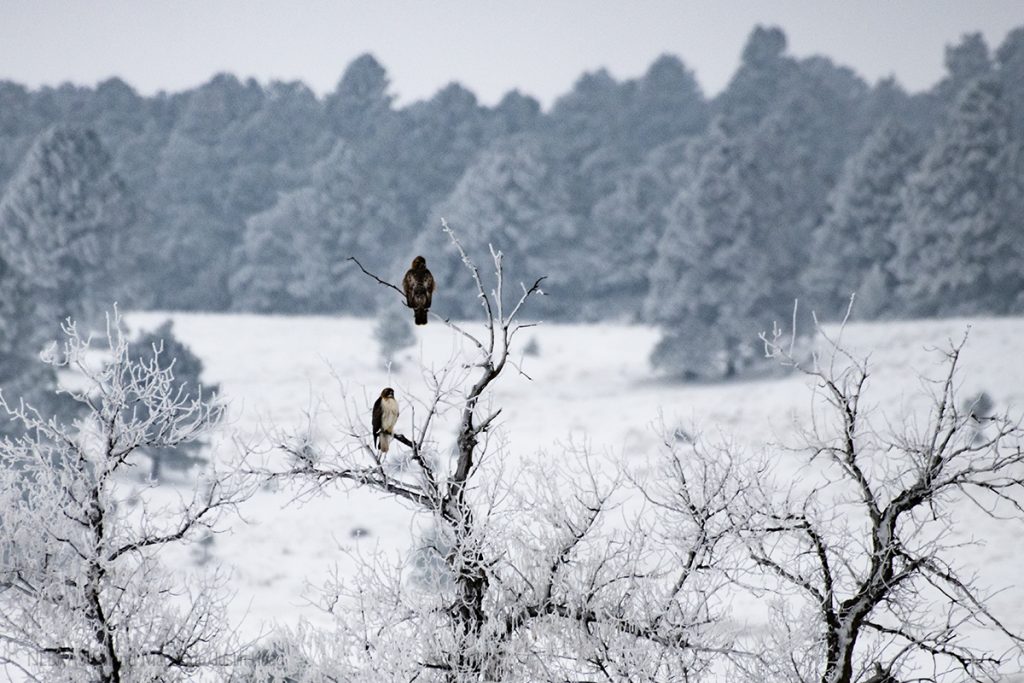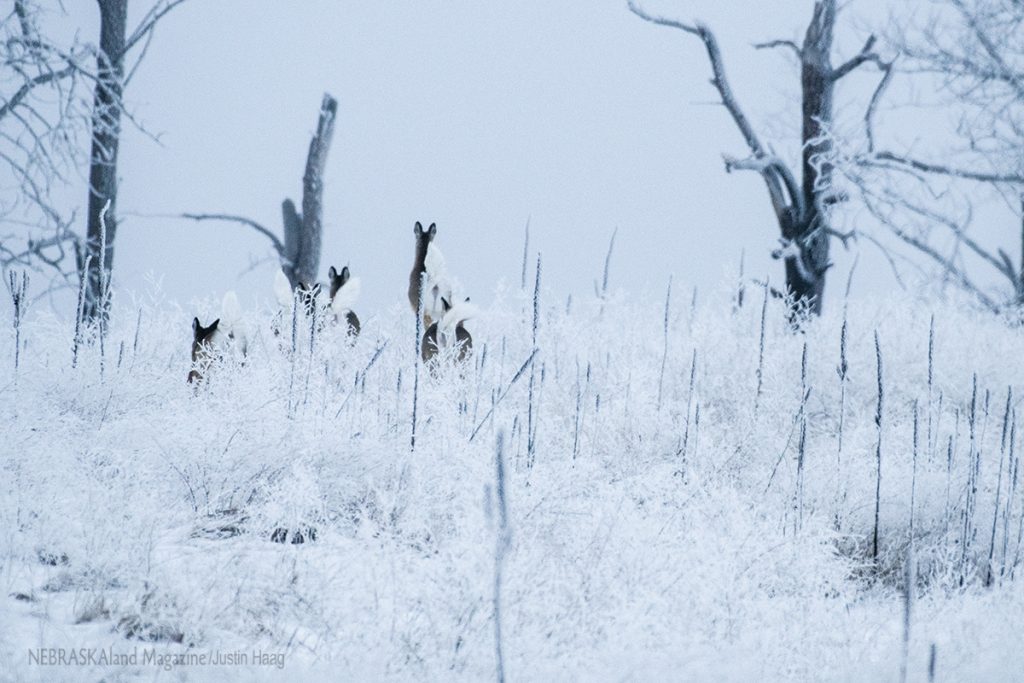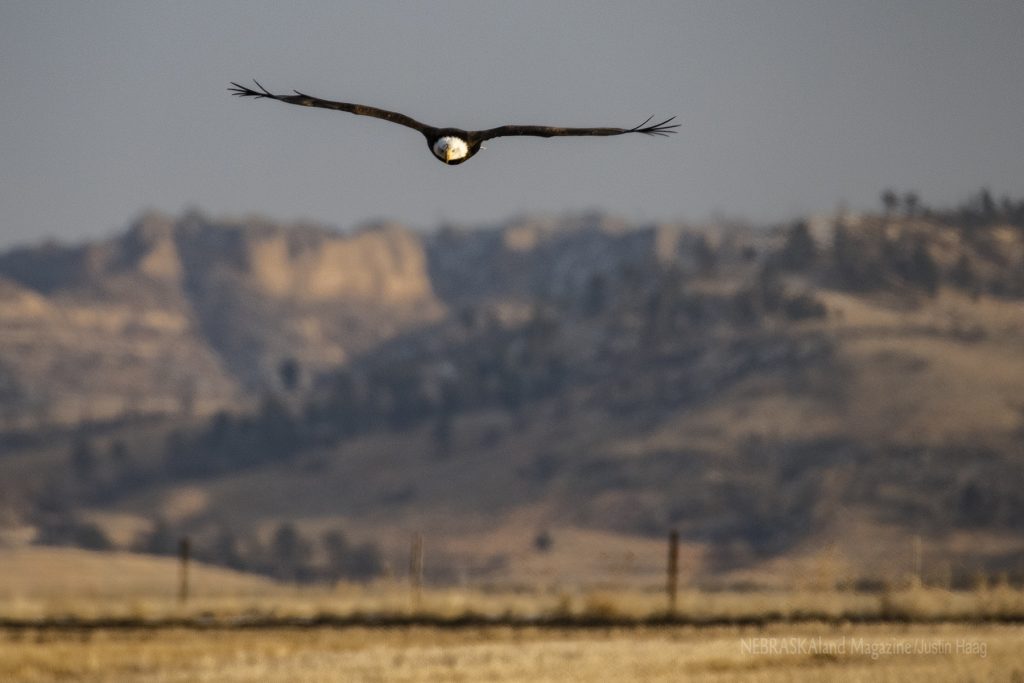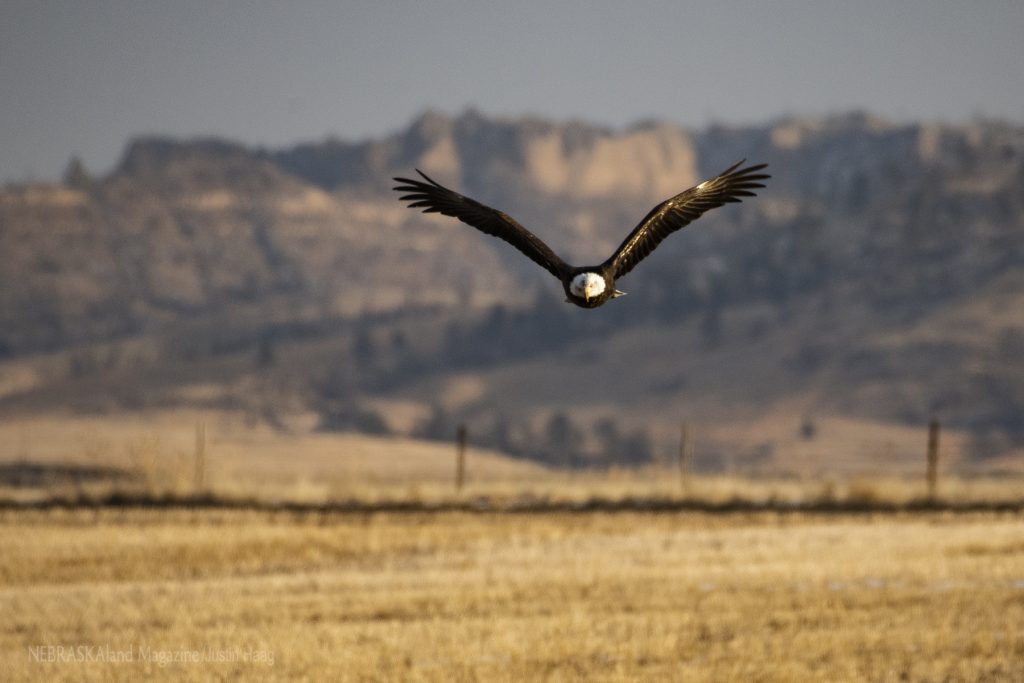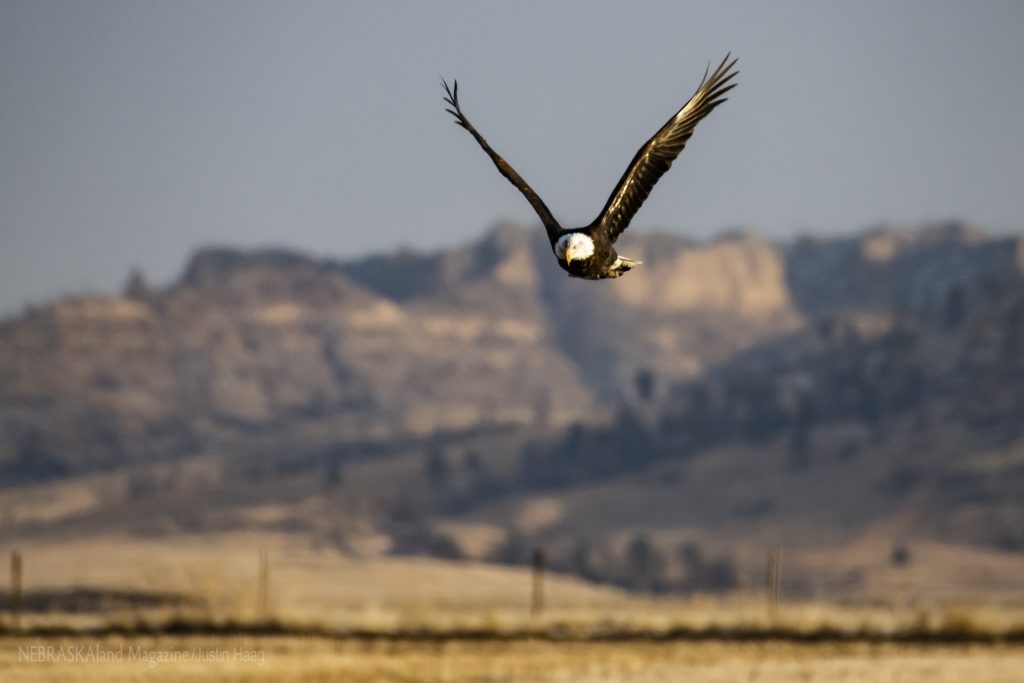All ears: Ear size is a distinguishing characteristic between mule deer (Odocoileus hemionus) and white-tailed deer (Odocoileus virginianus) – so much so that it helped mule deer get their name. I have read that the large ears enhances mule deer hearing, but have not found any scientific research to back that up. It would make sense, however, that an adaptation to hear over long distances would serve mule deer well considering they are known to inhabit the open plain while whitetails occupy forest.
Chilled pine: It seems hoarfrost has been in ample supply this winter. It always looks good on ponderosa pines (Pinus ponderosa). These images were captured at Metcalf Wildlife Management Area north of Hay Springs.
Red-tails and white: A pair of red-tailed hawks (Buteo jamaicensis) stand watch over the frosty scene. They are probably young ones if their non-red tail feathers serve as an indicator.
White on white: Usually a white-tailed deer’s tail stands out as it flees a scene. In this case, it’s their bodies that are more conspicuous.
‘Braska: No frost in these photos, but would you agree that a bald eagle (Haliaeetus leucocephalus) flying with the Pine Ridge as its backdrop looks good, anyway?
The post Northwestern Exposure: Oh, deer. More frost. appeared first on Nebraskaland Magazine.



